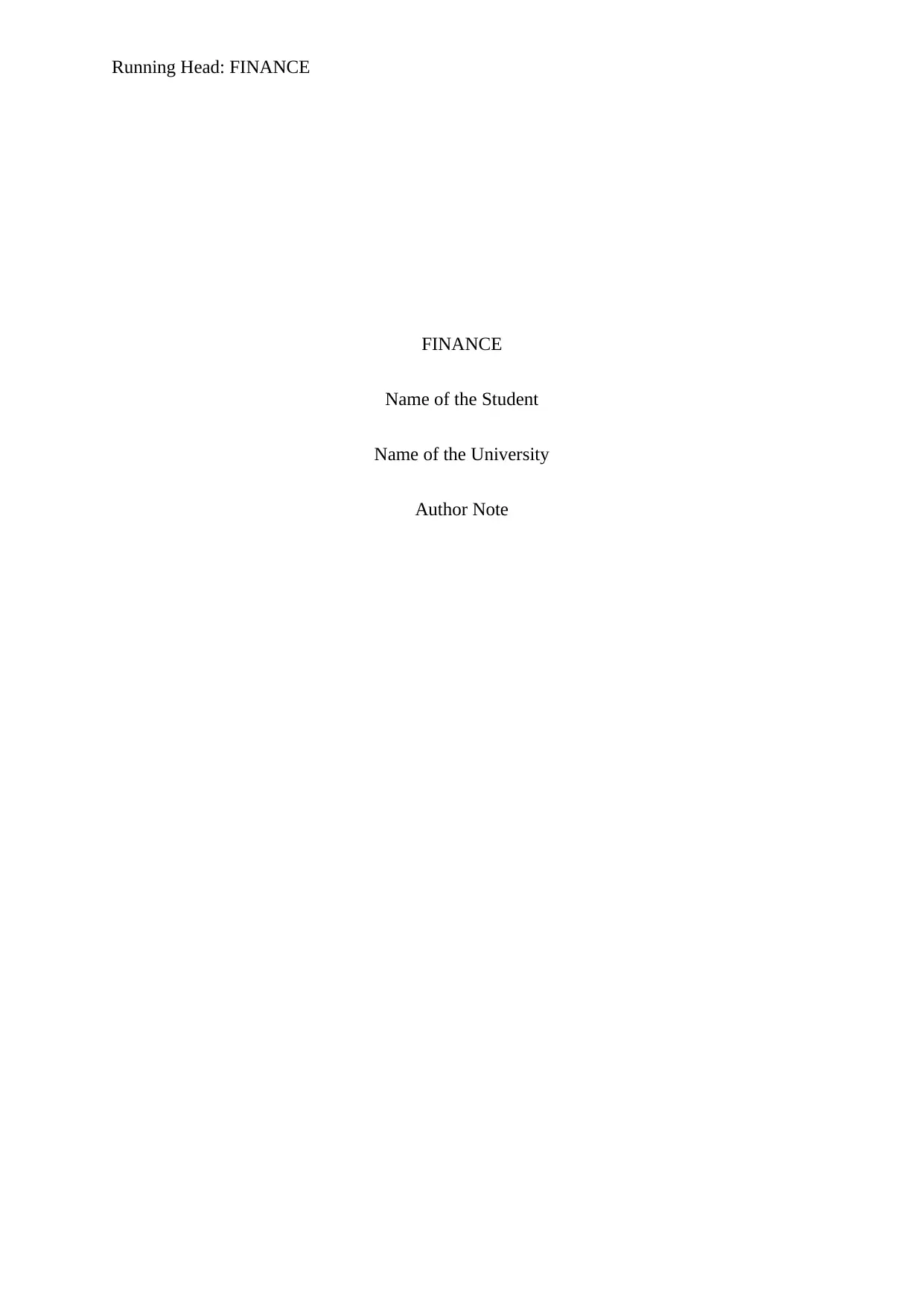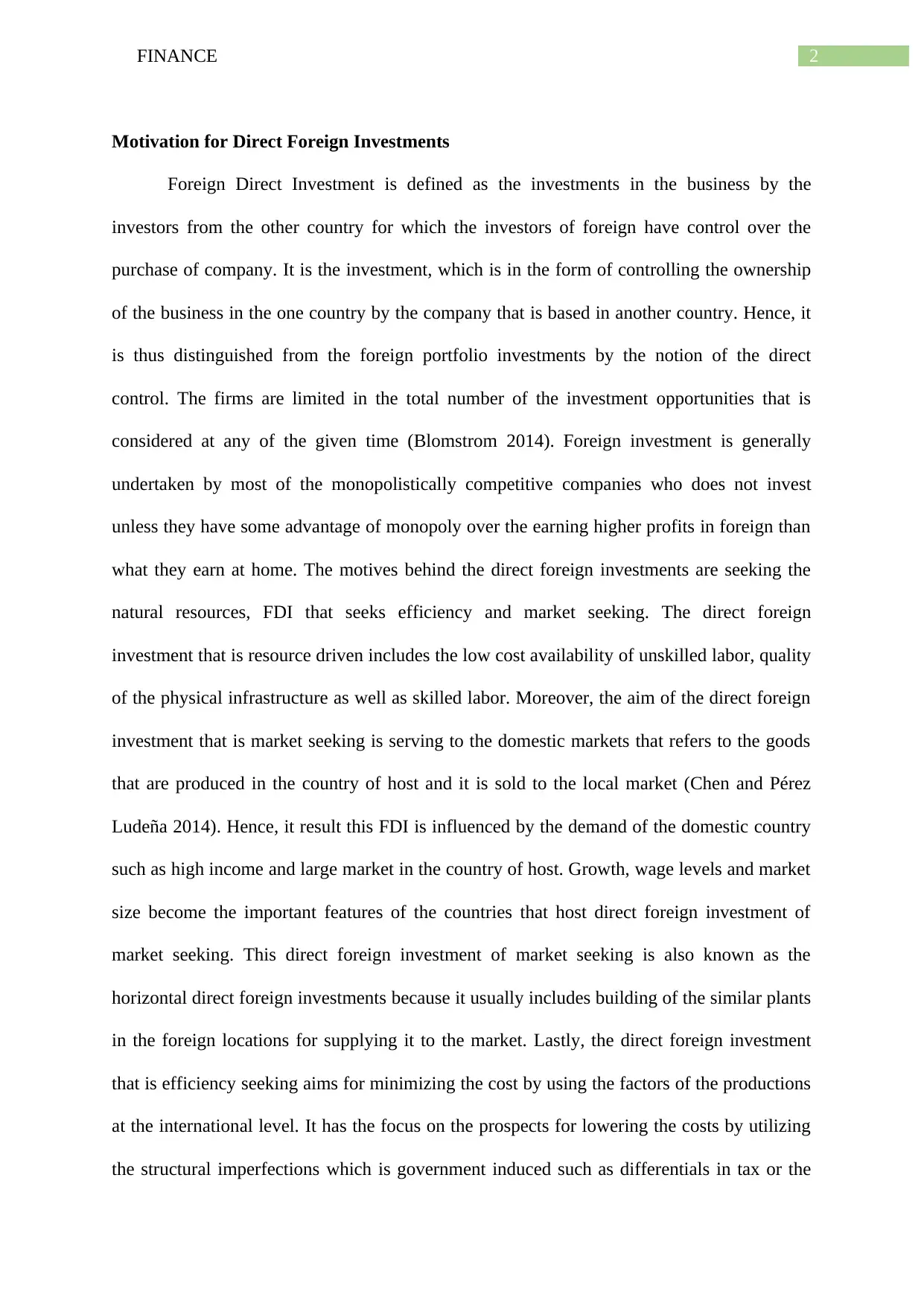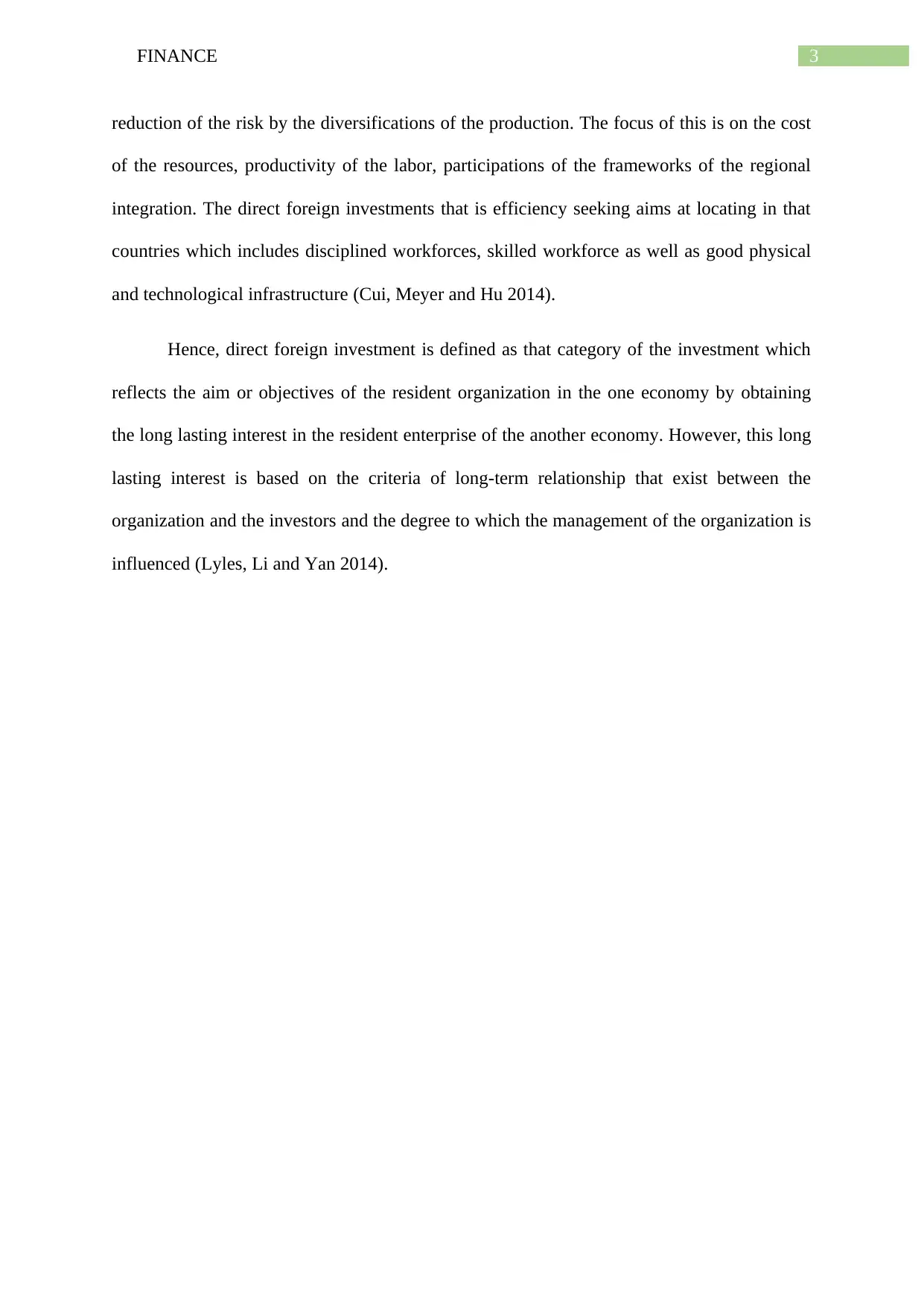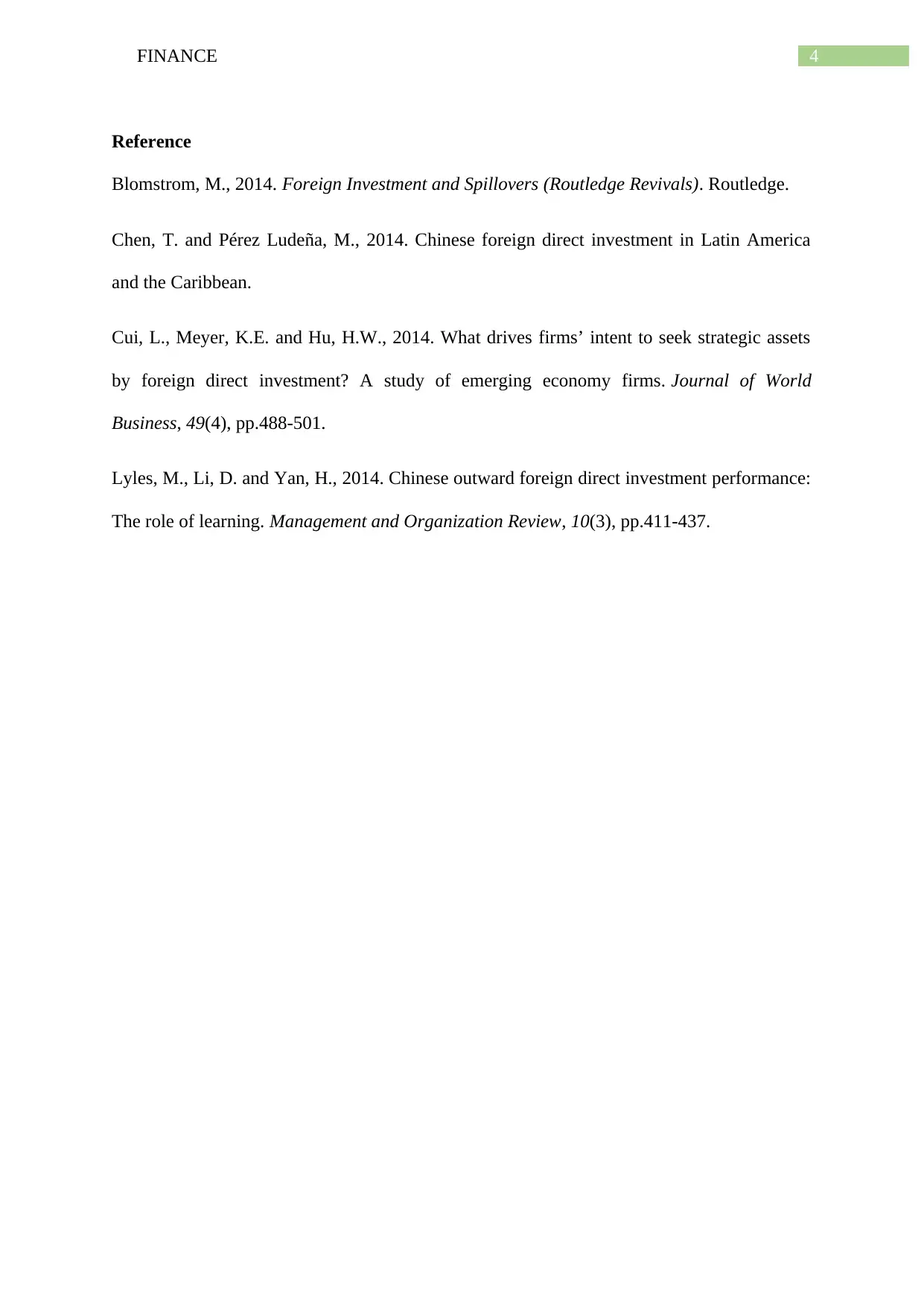Finance Report: Motivation and Analysis of Direct Foreign Investments
VerifiedAdded on 2022/12/27
|5
|710
|55
Report
AI Summary
This report delves into the motivations driving Foreign Direct Investments (FDI). It defines FDI as investments by foreign entities with control over a company, distinguishing it from foreign portfolio investments. The report categorizes the motivations behind FDI into three main types: resource-driven, market-seeking, and efficiency-seeking. Resource-driven FDI focuses on factors like low labor costs and infrastructure quality. Market-seeking FDI targets domestic markets, influenced by factors such as market size and income levels. Efficiency-seeking FDI aims at minimizing costs through international production factors, focusing on labor productivity and infrastructure. The report emphasizes the long-term interests and managerial influence associated with FDI, providing a comprehensive overview of its underlying drivers.
1 out of 5












![[object Object]](/_next/static/media/star-bottom.7253800d.svg)